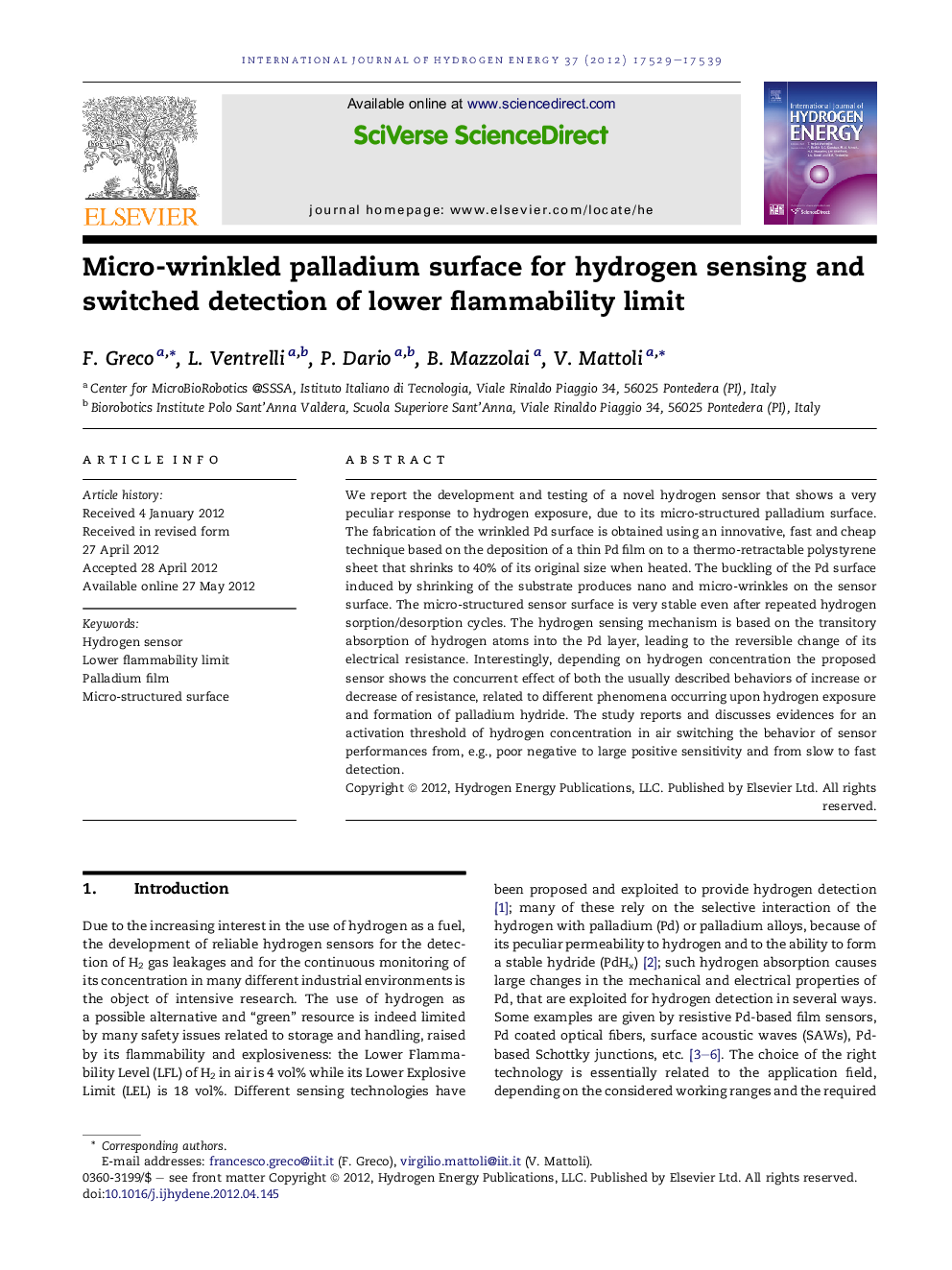| Article ID | Journal | Published Year | Pages | File Type |
|---|---|---|---|---|
| 1270941 | International Journal of Hydrogen Energy | 2012 | 11 Pages |
We report the development and testing of a novel hydrogen sensor that shows a very peculiar response to hydrogen exposure, due to its micro-structured palladium surface. The fabrication of the wrinkled Pd surface is obtained using an innovative, fast and cheap technique based on the deposition of a thin Pd film on to a thermo-retractable polystyrene sheet that shrinks to 40% of its original size when heated. The buckling of the Pd surface induced by shrinking of the substrate produces nano and micro-wrinkles on the sensor surface. The micro-structured sensor surface is very stable even after repeated hydrogen sorption/desorption cycles. The hydrogen sensing mechanism is based on the transitory absorption of hydrogen atoms into the Pd layer, leading to the reversible change of its electrical resistance. Interestingly, depending on hydrogen concentration the proposed sensor shows the concurrent effect of both the usually described behaviors of increase or decrease of resistance, related to different phenomena occurring upon hydrogen exposure and formation of palladium hydride. The study reports and discusses evidences for an activation threshold of hydrogen concentration in air switching the behavior of sensor performances from, e.g., poor negative to large positive sensitivity and from slow to fast detection.
► We present a new H2 sensor based on micro-wrinkled Pd surface deposited on polystyrene. ► Sensor shows a switching response to H2, sensing the gas over a certain threshold. ► Activation threshold can be tuned by changing the thickness of palladium film.► Sensor characteristics are compatible with LFL detection for safety applications.
